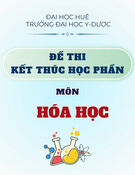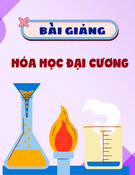
* Corresponding author.
E-mail address: farahnazkargar@yahoo.com (F. K. Behbahani)
2018 Growing Science Ltd.
doi: 10.5267/j.ccl.2018.08.003
Current Chemistry Letters 7 (2018) 87–92
Contents lists available at GrowingScience
Current Chemistry Letters
homepage: www.GrowingScience.com
Synthesis of arylidene dihydropyrimidinones and thiones catalyzed by iron (III)
phosphate
Fatemeh Moradia and Farahnaz K. Behbahania*
aDepartment of Chemistry, Karaj Branch, Islamic Azad University, Karaj, Iran
C H R O N I C L E A B S T R A C T
Article history:
Received April 28, 2018
Received in revised form
June 29, 2018
Accepted August 12, 2018
Available online
August 12, 2018
In this paper, the synthesis of arylidene heterobicyclicpyrimidinones and thiones is reported by
condensation of aromatic aldehydes, cyclopentanone, and urea or thiourea in the present of
FePO4 as the green and recyclable catalyst. Using solvent-free conditions, non-toxic and
inexpensive materials, simple and clean work-up, relatively short reaction times, and high
yields of the products are the advantages of this method. Also, some new derivatives of
arylidene dihydropyrimidinones and thiones were prepared by this green method.
© 2018 Growing Science Ltd. All rights reserved.
Keywords:
Arylidene
Iron (III) phosphate
Heterobicyclic, Pyrimidinones
Urea, Thiourea
1. Introduction
Pyrimidinones are used in various pharmaceutical and biochemical fields.1,2 Therefore, an interest
for the synthesis of 3,4-dihydropyrimidin-2(1H)-ones (DHPMs) and their derivations is tremendously
increasing.3 One of the most important functionalized pyrimidinones is fused derivatives with an
arylidene group. These heterocyclic compounds are significant intermediates for the preparation of
many biologically active products. For example, some of them show a broad-spectrum antitumor
activity.4
Because of the various therapeutic utility of arylidene heterobicyclicpyrimidinones, a number of
synthesis routs for these derivatives were developed.5 In most cases, using strong Brönsted acid such
as HCl or base such as sodium alkoxide or potassium hydroxide was necessary for the progress of the
reaction.6,7 More useful procedures are three-component condensation with aromatic aldehydes,
cyclopentanone, and urea or thiourea in presence of stoichiometric amounts of TMSCl8 and YbCl3.9
Therefore, we wish to report the synthesis of arylidene heterobicyclicpyrimidinones and thiones using
FePO410,11 in the presence of arylaldehydes, cyclopentanone, and urea or thiourea. Moreover, this
approach is known as an important economical and environmentally benign process in synthesis

88
chemistry, because it decreases the number of reaction steps, energy consumption and waste (Scheme
1).
2. Results and Discussion
To optimize the reaction conditions, the reaction of benzaldehyde, cyclopentanone, and urea was
selected as a model reaction in presence of catalytic amount of FePO4. The best result was obtained
when the reaction was carried in a 2:1.1:1.2 mole ratio of benzaldehyde, cyclopentanone, and urea in
the presence of FePO4 (20 mol %) under solvent-free condition at 110 °C for 4.0 h. In a catalyst free
reaction, without FePO4, no desired product was obtained in 4.0 h. But, very low yield (20%) was
resulted after 48 h. To use these optimized conditions (benzaldehyde (2 mmol), cyclopentanone (1.1
mmol), urea (1.2 mmol), and FePO4 (20 mol %) under solvent-free condition at 110 °C for 4.0 h.), the
reaction between various aromatic aldehydes and cyclopentatone in presence of urea and thiourea was
investigated (Table 1). It was found that all the reactions proceeded smoothly to give the corresponding
arylidene heterobicyclicpyrimidinones and thiones in high yields. Both aromatic aldehydes bearing
electron-donating and electron withdrawing groups gave excellent yields. The mildness of the
procedure makes it very selective, as it tolerates a variety of functionalities, including; N(Me)2, Cl, Me,
NO2 and isopropyl groups. Also, this procedure was equally effective for thiourea.
ArCHO +O
H
2
N
NH
2
X
+
N
H
NH
Ar
X
Ar
FePO
4
X= O, S
1234(a-j)
Solvent-free
12
3
4
5
6
7
7'
Scheme 1
Table 1. Synthesis of arylidenepyrimidinones and thiones using FePO4
Product Ar X Time(h) Yield%
4a C6H5- O 4.0 90
4b 4-Cl-C6H4- O 4.5 80
4c 3-NO2-C6H4- O 3.0 90
4d 4-CH3-C6H4- O 6.0 80
4e C6H5- S 5.0 80
4f 4-Cl-C6H4- S 5.5 75
4g 3-NO2-C6H4- S 4.5 80
4h 4-(CH3)2CH-C6H4 S 5.0 75
4i 4-NO2-C6H4- O 4.0 90
4j 4-(CH3)2N-C6H4- O 4.5 70
The suggested mechanism9 of FePO4-catalyzed transformation is shown in Scheme 2. That involves
formation of benzylidenecyclopentanone 1 and benzylideneurea 2 via aldol condensation aryl aldehyde
with cyclopentanone and nucleophilic attacking of urea to FePO4-activated aldehyde. Coupling 1 and 2
following dehydration, leading to FePO4-activated intermediate 5. The desired product 7 was resulted by
ring closure of intermediate 5 following imine-enamine tautomerization 6 to 7.

F. Moradi and F. K. Behbahani / Current Chemistry Letters 7 (2018)
89
Ar H
O
FePO
4
H
2
NNH
2
X
N
NH
2
XH
Ar
O
O
H
Ar
NH
X
N
Ar
H
Ar
H
N
X
H
N
Ar
H
Ar
H
NH
X
H
N
Ar
H
Ar
FePO
4
Ar H
O
-H
2
O
-FePO
4
-H
2
O
-FePO
4
FePO
4
OH
Ar N
N
X
H
Ar
OH H
Ar
H
N
N
X
H
Ar
H
Ar
-H
2
O
1
2
3
4
5
6
7
Scheme 2. Proposed mechanism for the synthesis of arylidenepyrimidinones and thiones using FePO4
To show advantages of this catalytic method with those of previously reported, the results of the
formation of 7-benzylidene-4-phenyl-3,4,6,7-tetrahydro-1H-cyclopenta[d]pyrimidin-2(5H)-one (4a)
were compared for a variety of catalysts (Table 2). From the results given in this Table 2, our method
is evident, regarding the catalyst amounts, and high yield which are very important in chemical industry
especially when it is combined with easy separation and reusability of the catalyst, and good yield.
Table 2. Synthesis of 7-benzylidene-4-phenyl-3,4,6,7-tetrahydro-1H-cyclopenta[d]pyrimidin-
2(5H)-one catalyzed by various catalysts.
Entry Catalyst (mol%) Condition Time (h) Yield% Ref.
1 TMSCl (100) DMF-CH3CN/rt 3.0 93 8
2 (3)
3
YbCl Neat/90 °C 3.0 79 9
3 (5)
a
IL Neat/100 °C 0.1 86 12
4 (5)
b
4
O[Hmim]HS
Solvent-free/110 °C 1.0 38 13
5 (10)
4
O[Hmim]HS Solvent-free/110 °C 1.0 52 9
6 [Hmim]HSO4 (15) Solvent-free/110 °C 0.75 65 9
7 [Hmim]HSO4 (25) Solvent-free/25 °C 1.5 trace 9
8 (25)
4
O[Hmim]HS Solvent-free/80 °C 1.0 63 9
9 (10)
4
FePO Solvent-free/110 °C 4.0 90 This work
a IL = (CH3CH2)3N+CH2(CH2)2CH2SO3H HSO4-
b Methyl imidazolium hydrogen sulfate
3. Conclusions
FePO4 was used as an inexpensive, easily available, non-corrosive and environmentally benign
catalyst for the synthesis of arylidene heterobicyclicpyrimidinones by one-pot three component
condensation reactions. Using solvent-free conditions, non-toxic and inexpensive materials, simple and
clean work-up and high yields of the products are the advantages of this method. Three new derivatives
of arylidene heterobicyclicpyrimidinones (entries 8-10; Table 1) were also synthesized by this new
protocol.
4. Experimental
Melting points were measured by using the capillary tube method with an electro thermal 9200
apparatus. IR spectra were recorded on Perkin Elmer FT-IR spectrometer did scanning between 4000–
400 cm-1. 1HNMR and 13CNMR spectra were obtained on Bruker DRX- 300 MHz NMR instrument.
Analytical TLC of all reactions was performed on Merck precoated plates (silica gel 60 F-254 on
aluminium).

90
General procedure for the synthesis of arylidene heterobicyclicpyrimidinones using FePO4
A mixture of the aldehyde (2.0 mmol, 4a, 4e 0.212 g; 4b, 4f 0.280 g; 4c 0.302 g; 4d 0.240 g; 4h
0.296 g; 4i 0.302 g 4j 0.298 g), cyclopentanone (1.1 mmol, 0.084 g), urea or thiourea (1.2 mmol, 0.072
g or 0.0913 g) and FePO4 (20 mol%, 0.0302 g) was heated in an oil bath at 110 °C for the specified
times. The reaction was followed by TLC (ethyl acetate/cyclohexane, 50:50). After completion of the
reaction, hot ethanol (15 ml) was added and the catalyst was filtered off. Then the liquor was cooled to
room temperature to form solid product. The solid product was collected by filtration, washed with
water and then washed with ethanol to afford the pure product. The reusability of the catalyst was also
studied. At the end of the reaction, the catalyst was filtered off, washed by ethanol or dichloromethane,
and dried at 80 °C. Then the catalyst was subjected for three runs. After three runs, the catalytic activity
of the catalyst was almost the same as those of the freshly used catalyst (Table 3).
Table 3. The reusability of the catalyst
Run 1 2 3
Yield% 90 90 89
Reaction condition: Benzaldehyde (2.0 mmol, 0.212 g), cyclopentanone (1.1 mmol, 0.092 g), urea or thiourea (1.2 mmol, 0.072 g or 0.0913 g) and FePO4
(20 mol%, 0.0302 g) under solvent-free condition at 110 °C.
Spectra and physical data for known products
7-(Benzylidene)-3,4,6,7-tetrahydro-4-phenyl-1H-cyclopentapyrimidin-2(5H)-one (4a)
White yellow solid; Yield%: 90; m.p. 228-230 °C, [236-239 °C (lit. 8)]; IR (KBr), ν cm-1: 3447 (N-H),
3350 (N-H), 1682 (C=O), 1599 (C=C), 1464 (C=C, aromatic ring). 13C NMR (DMSO-d6): δ 150.3 (C2),
143.2 (C4’), 139.9 (C7), 135.2 (C7”), 128.7 ( Ar, =C-NH), 127 (Ar), 126.4 (Ar), 124.5 (C7’; C=CH),
115 (=C), 59.8 (C4), 28.1 (C5), 22 (C6); 1H NMR (DMSO-d6): δ 10.8 (s, 1H, NH), 8.75 (s, 1H, NH),
7.13-7.90 (m, 10 H, Ar-H), 6.62 (s, 1H, =CH), 5.30 (s, 1H, C4 H) [5.15 (s, 1H, C4 H, Lit. 8], 2.22-2.10
(m, 2H, C9 H), 2.09-2.06 (m, 2H, C8 H).
7-(4-Chlorobenzylidene)-4-(4-chlorophenyl)-3,4,6,7-tetrahydro-1H-cyclopenta[d] pyrimidin-2(5H)-
one (4b)
White solid; Yield%: 80; m.p. 249-253 °C [252-255 °C (lit. 8)]; IR (KBr), ν cm-1: 3338 (N-H), 1681
(C=O), 1592 (C=C), 1489 (C=C, aromatic ring). 13C NMR (DMSO-d6): δ 150.3 (C2), 141.3 (C4’),
139.9 (C7), 133.3 (C7”), 132.3 (C-Cl), 128.3 ( Ar, =C-NH), 127.6 (Ar), 124.5 (C7’; C=CH), 115.5
(=C), 59.8 (C4), 28.1 (C5), 22 (C6); 1H NMR (DMSO-d6): δ 9.91 (s, 1H, NH), 8.91 (s, 1H, NH), 7.52–
7.9 (m, 8H, Ar-H), 6.62 (s, 1H, =CH), 5.18 (s, 1H, C4 H) [5.18 (s, 1H, C4 H, Lit. 8], 2.85–2.73 (m, 2
H, C9 H), 2.41–2.36 (m, 2 H, C8 H).
7-(3-nitrobenzylidene)-3,4,6,7-tetrahydro-4-(3-nitrophenyl)-1H-cyclopentapyrimidin-2(5H)-one (4c)
White yellow solid; Yield%: 90; m.p. 234-238 °C [235-239 °C (lit. 8)]; IR (KBr), ν cm-1: 3302 (N-H),
1665 (C=O), 1615 (C=C), 1531 (C=C, aromatic ring). 13C NMR (DMSO-d6): δ 150.3 (C2), 148.2(C-
NO2), 144.1 (C4’), 139.9 (C7), 136.1 (C7”), 132.5 (Ar), 129.6 ( Ar) 128.3 ( =C-NH), 124.5 (C7’;
C=CH), 122.2 (Ar), 121.3 (Ar), 120.3 (Ar) 115.5 (=C), 58.8 (C4), 28.1 (C5), 22 (C6); 1HNMR
(DMSO-d6): δ 10.13 (s,1H, NH), 8.85 (s, 1H, NH), 8.68–8.33 (m, 4H, Ar-H), 8.31–8.11 (m, 4H, Ar-
H), 6.89 (s, 1H, =CH), 5.77 (s, 1H, C4 H) [5.45 (s, 1H, C4 H, Lit. 8], 2.41–2.36 (m, 2H, C9 H) 1.15-
1.13 (m, 2H, C8 H).
7-(4-methylbenzylidene)-3,4,6,7-tetrahydro-4-(4-methylphenyl)-1H-cyclopentapyrimidin-2(5H)-one
(4d)
White solid; Yield%: 80; m.p. 235–2240 °C [238-241°C (lit. 8)]; IR (KBr), ν cm-1: 3441 (N-H), 3348
(N-H), 1678 (C=O), 1508 (C=C), 1464 (C=C, aromatic ring). 13C NMR (DMSO-d6): δ 150.3 (C2),
140.1 (C4’), 139.9 (C7), 137.6 (C-CH3), 132.2 (C7”), 132.5 (Ar), 129.0 ( Ar), 128.3 ( =C-NH), 126.6

F. Moradi and F. K. Behbahani / Current Chemistry Letters 7 (2018)
91
(Ar), 124.5 (C7’; C=CH), 115.5 (=C), 59.8 (C4), 28.1 (C5), 24.3 (CH3), 22 (C6); 1H NMR (DMSO-
d6): δ 8.73 (s, 1H, NH), 7.23–7.14 (m, 9H, Ar-H, NH), 6.58 (s, 1H, =CH), 5.09 (s, 1H, C4 H) [5.09 (s,
1H, C4 H, Lit. 8], 2.82–2.71 (m, 2 H, C9 H), 2.38–2.33 (m, 2H, C8 H), 2.28 (s, 3H, CH3), 2.14 (s, 3H,
CH3).
7-Benzylidene-3,4,6,7-tetrahydro-4-phenyl-1H-cyclopentapyrimidine-2(5H)-thione (4e)
White yellow solid; Yield%: 80; m.p. 215–220 °C [219-223 °C (lit. 8)]; IR (KBr), ν cm-1: 3380 (N-H),
3168 (N-H), 1604 (C=S), 1542 (C=C), 1448 (C=C, aromatic ring). 13C NMR (DMSO-d6): δ 174.5 (C2),
143.2 (C4’), 141.3 ( =C-NH),139.9 (C7), 135.2 (C7”), 129.0 ( Ar), 128.1 (Ar), 126.4 (Ar), 124.5 (C7’;
C=CH), 113.3 (=C), 64.8 (C4), 28.1 (C5), 23.0 (C6); 1H NMR (DMSO-d6): δ 10.30 (s, 1H, NH), 9.18
(s, 1H, NH), 8.29 –7.54 (m, 10H, Ar-H), 7.09 (s, 1H, =CH), 5.35 (s, 1H, C4 H) [5.09 (s, 1H, C4 H,
Lit. 8], 2.93–2.86 (m, 2H, C9 H), 2.52–2.49 (m, 2H, C8 H ).
7-(4-chlorobenzylidene)-4-(4-chlorophenyl)- 3,4,6,7-tetrahydro-1H-cyclopentapyrimidine-2(5H)-
thione (4f)
White solid; Yield%: 75; m.p. 219–224 °C [226-228 °C (lit. 8)]; IR (KBr), ν cm-1: 3441 (N-H), 3345
(N-H), 1660 (C=O), 1602 (C=C), 1547 (C=C, aromatic ring). 13C NMR (DMSO-d6): δ 174.5 (C2),
141.3 (C4’, =C-NH ), 139.9 (C7), 133.2 (C7”), 132.3 (C-Cl), 128.7 ( Ar), 128.4 (Ar), 126.4 (Ar), 124.5
(C7’; C=CH), 113.3 (=C), 64.9 (C4), 28.1 (C5), 23.0 (C6); 1H NMR (DMSO-d6): δ 10.2 (s, 1H, NH),
8.69 (s, 1H, NH), 7.32–6.88 (m, 8H, Ar-H), 6.98 (s, 1H, =CH), 5.49 (1H, s, C4 H) [5.49 (s, 1H, C4 H,
Lit. 8], 2.73–2.68 (2H, m, C9 H) 2.40–2.36 (m, 2H, C8 H).
7-(4-nitrobenzylidene)-3,4,6,7-tetrahydro-4-(4-nitrophenyl)-1H-cyclopentapyrimidin-2(5H)-one (4i)
White yellow solid; Yield%: 90; m.p. 203-205 °C, [204-207 °C (lit. 13)]; IR (KBr), ν cm-1: 3449 (N-
H), 3344 (N-H), 1667 (C=O), 1519 (NO2, asymmetry), 1466 (C=C), 1349 (NO2, symmetry). 13C NMR
(DMSO-d6): δ 150.3(C2), 149.3 (C4’), 147 (C4”), 146.0 (C4”), 141.0 (C6), 139.8(C7), 128.3 (Ar),
127.3 (Ar), 124.5 (C=CH), 121.0 (Ar), 115.5 (C5), 60.0 (C4), 28.1 (C8), 22.2 (C9); 1H NMR (DMSO-
d6): δ 10.15 (s, 1H, NH), 8.42 (s, 1H, NH), 7.51-8.39 (m, 8H, Ar-H), 6.96 (s, 1H, = CH), 5.76 (s, 1H,
C4 H), 2.82-2.99 (m, 2H, C9 H), 2.54-2.61 (2H, m, C8 H). [M+]: 392.11, Elemental analysis: Found,
%: C, 61.12; H, 4.09; N, 14.17. C20H16N4O5. Calculated, %: C, 61.22; H, 4.11; N, 14.28.
Spectra and physical data for unprecedented products
7-(3-nitrobenzylidene)-3,4,6,7-tetrahydro-4-(3-nitrophenyl)-1H-cyclopentapyrimidine-2(5H)-thione
(4g)
White yellow solid; Yield%: 90; m.p. 295-300 °C; IR (KBr), ν cm-1: 3292 (N-H), 1658 (C=O), 1614
(C=C), 1530 (NO2, asymmetry), 1503 (C=C, aromatic ring) 1350 (NO2, symmetry). 13C NMR (DMSO-
d6): δ 174.5 (C2), 148.2(C-NO2), 144.1 (C4’), 141.3 (C4’; =C-NH ), 139.9 (C7), 136.2 (C7”), 133.1
(Ar), 128.7 ( Ar), 129.4 (Ar), 124.5 (C7’; C=CH), 22.2 (Ar), 121.3, 120.3 (Ar), 113.3 (=C), 63.9 (C4),
28.1 (C5), 23.0 (C6); 1HNMR (DMSO-d6): δ 10.27 (s, 1H, NH), 9.20 (s, 1H, NH), 8.24–8.20 (m, 4H,
Ar-H), 7.82–7.63 (m, 4H, Ar-H), 7.02 (s, 1H, =CH), 5.52 (s, 1H, C4 H) [5.52 (s, 1H, C4 H, Lit. 8], ,
2.97–2.88 (m, 2 H, C9 H), 2.57–2.51 (m, 2 H, C8 H).
7-(4-isopropylbenzylidene)-3,4,6,7-tetrahydro-4-(4-isopropylphenyl)-1H-cyclopenta[d]pyrimidine-
2(5H)-thione (4h)
White solid; Yield%: 75; m.p. 218-220 °C; IR (KBr), ν cm-1: 3383 (N-H), 3172 (N-H), 1607 (C=S),
1542 (C=C), 1462 (C=C, aromatic ring). 13C NMR (DMSO-d6): δ 174.5.3 (C2), 147.3 (C4’), 146.7
(C4’), 141.0 (C6), 140.4 (C4), 139.8 (C7), 132.4 (Ar), 126.3 (Ar), 124.5 (C=CH), 113.5 (C5), 65.0
(C4), 36.2 [CH(CH3)2], 28.2 (C8), 23.4 [CH(CH3)2], 23.2 (C9); 1HNMR (DMSO-d6): δ 10.31 (1H, s,
NH), 9.91(s,1H, NH), 7.30-7.36 (m, 4H, Ar-H), 7.25-7.30 (m, 4H, Ar-H), 7.18 (s, 1H, =CH), 5.42
(s,1H, C4 H), 3.11 (m, 2H, [CH(CH3)2]), 2.82-2.98 (m, 2H, C9 H), 2.53-2.60 (2H, m, C8 H). 1.17 (m,
12H, [CH(CH3)2]). [M+]: 402.21, Elemental analysis: Found, %: C, 77.55; H, 7.48; N, 6.89; S, 7.91.
C26H30N2S. Calculated, %: C, 77.57; H, 7.51; N, 6.96; S, 7.96

![Đề thi kết thúc học phần Nguyên lí Hóa học 2 [mới nhất]](https://cdn.tailieu.vn/images/document/thumbnail/2025/20251014/anhinhduyet000/135x160/69761760428591.jpg)














